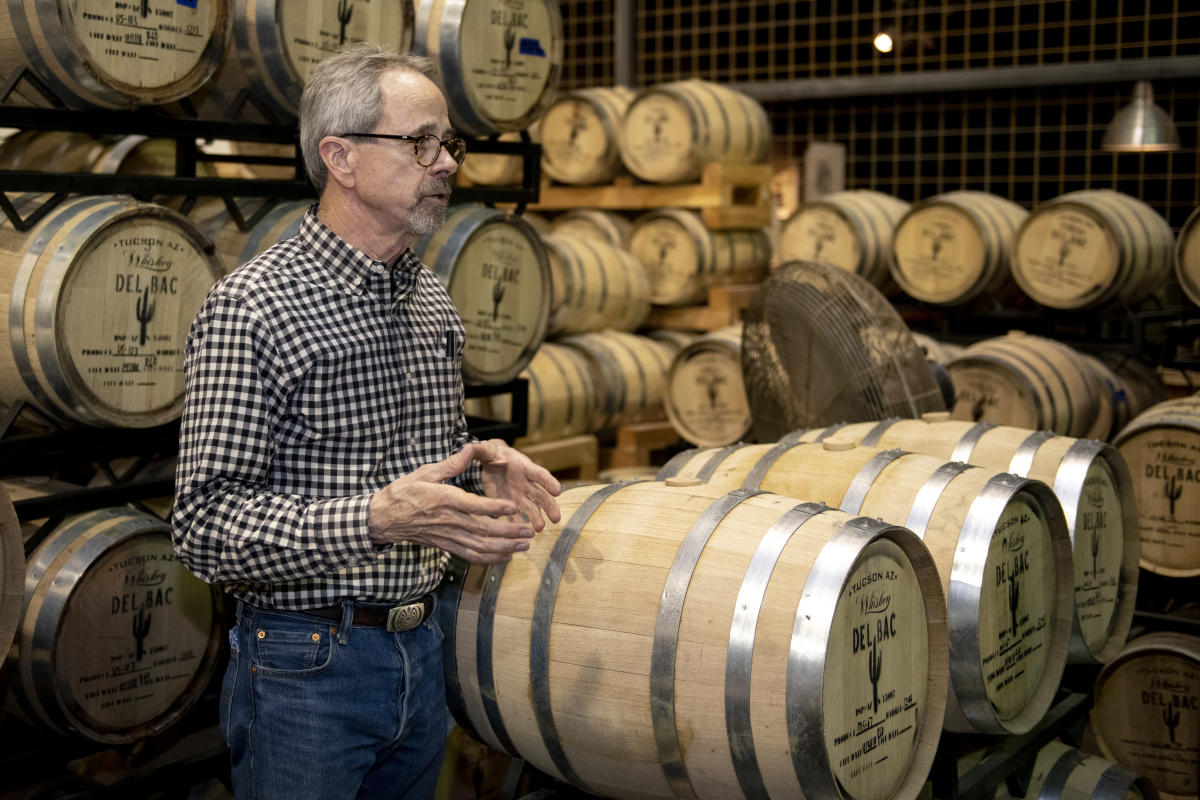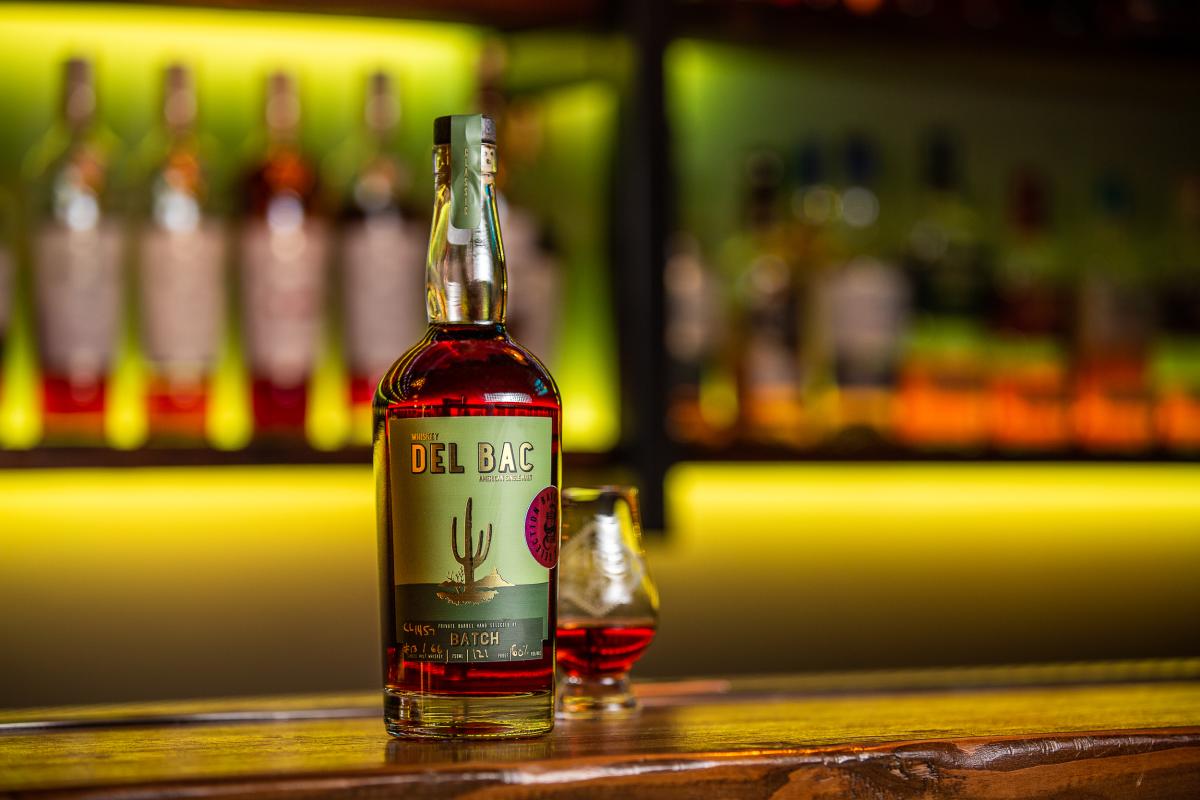A furniture maker's leftover mesquite inspires award-winning whiskey with a Tucson twist.
by Debbie Weingarten
The Story of Whiskey Del Bac and Hamilton Distillers
One evening in 2006, Stephen and Elaine Paul had a revelation over a glass of scotch. At the time, the couple owned Arroyo Design, a company specializing in custom furniture made from mesquite wood. For thirty years, they would bring their mesquite scraps home to barbeque over. “Those are our profits going up in smoke,” Stephen would joke.
But one night, as they stared at the embers, scotch in hand, Elaine wondered aloud, “Why couldn’t you dry malt over mesquite, instead of peat?” It was an enthralling idea, and Stephen says that single question would lead to a new passion for making whiskey, and a new business venture as owners of Hamilton Distillers.
Stephen Paul, Co-founder of Hamilton Distillers
To understand the question that changed everything, Stephen says you have to understand the process of making whiskey. Whiskey is made from grain, and Scottish-style whiskey—or scotch—is specifically made from barley. To become alcohol, first, the barley needs to be germinated. This germination process creates an enzyme that transforms the starch in the grain into malt sugar, which is necessary for fermentation. Once transformed, the malt is heat-dried before it can be cooked or mashed and then distilled. Whereas peat is used in Scotland as fuel for the drying process, Elaine’s idea was to heat-dry the malt using mesquite wood.
After that night in 2006, Stephen says he couldn’t shake the idea. So he bought a small still from Portugal and began experimenting with using the Scottish model of whiskey making—100% barley, distilled twice in a pot still, but drying the malt with mesquite—to make American single malt whiskeys. Those first experiments gave way to a 40-gallon still, set up in an area of the Arroyo Designs building, and larger batch experimentation. By 2011, Hamilton Distillers was officially incorporated, and their three distinctly differently Whiskeys del Bac—Classic, Dorado, and Clear—were shared with the Tucson marketplace.
Whiskey Del Bac Bottle at Batch Tucson
In December 2014, Hamilton Distillers moved to a new building, now home to the operation’s 500-gallon system and malt house. The new system, which Stephen calls “a prototype system” and says “it doesn’t really exist in this form anywhere else,” involves irrigating, germinating, and drying the malt in large tanks, as opposed to floor drying, in order to save floor space and gain more control over the malting process. “We have to make all the same decisions that we did before,” says Stephen, “But we have more knowledge because of this system.”
That the whiskey is made entirely under one roof makes Hamilton Distillers an immediate outlier in the industry, and in fact, they’re one of only seven distilleries in the United States that malts their own barley—a fact that Stephen says he didn’t realize when they started. For as much as industrialization has changed the food marketplace, so too has it changed the world of drink. It’s common, for example, for mega-distilleries to supply bulk spirits to smaller distilleries, who then bottle it and stamp it with a new name. “We don’t do that,” says Stephen. “We make everything in the house. We’re grain-to-glass.”
“We don’t do that,” says Stephen. “We make everything in the house. We’re grain-to-glass.”
As a testament to Hamilton’s grain-to-glass concept, the response to the Whiskeys del Bac has been glowing. In 2017, Esquire named them the 7th best craft whiskey in the United States, and Forbes Magazine included them in a top 10 list of craft whiskeys for Father’s Day. And two years in a row, at the San Francisco World Spirits Competition, Hamilton Distillers won double golds for the Dorado and Classic Whiskeys del Bac.
Just a few years after its inception, Hamilton Distillers is still evolving. Today Nathan Thompson Avelino is the head distiller and Ramon Olivas is the assistant distiller. “Our product is better than it was a year ago, and a year ago it was better than the year before that,” says Stephen. “And we’re going to keep on improving…but the goal has always been to make a true Sonoran Desert whiskey.”


